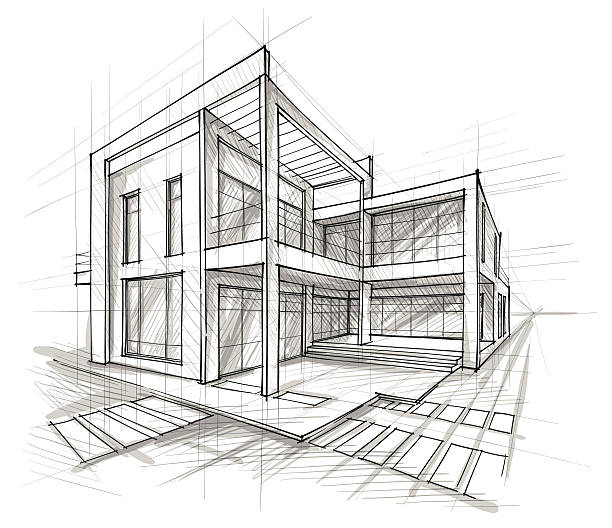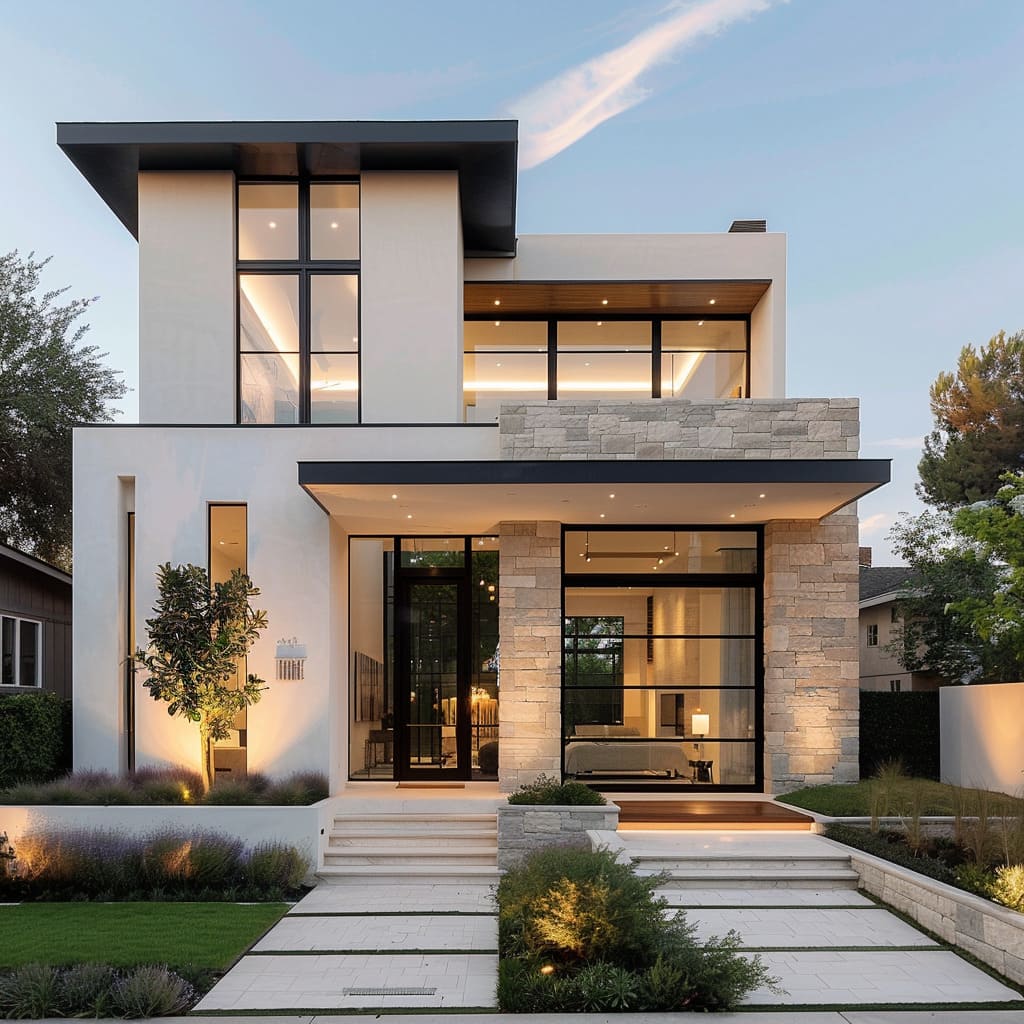Why CDA Architects Are Leaders in Architectural Style and Development
Why CDA Architects Are Leaders in Architectural Style and Development
Blog Article
The Influence of Technical Improvements on the Design Practices of Contemporary Architects
The quick advancement of technological devices has significantly improved the design landscape for modern architects, promoting unprecedented degrees of advancement and sustainability. The combination of Structure Info Modeling (BIM), parametric design, and expert system has not only structured collaboration amongst varied teams however also redefined job implementation. As designers welcome these advancements, they are challenged with complicated obstacles that might influence their creative processes. Discovering these characteristics exposes a nuanced interaction between technology and standard design approaches, motivating a closer evaluation of what the future holds for architectural methods.
Development of Architectural Equipment
Exactly how have architectural tools changed the style and building and construction processes over the centuries? The evolution of architectural devices has significantly affected the efficiency, precision, and creativity of style and building and construction.
With the development of the Renaissance, the intro of the compass and the protractor marked a crucial shift. These devices enabled designers to attain greater precision in their designs, helping with the appearance of more complex and proportional buildings. The Industrial Change further reinvented building method with the intro of mechanized devices and products, permitting larger and extra ambitious jobs.
In the 20th century, the growth of computer-aided design (CAD) software program changed the landscape once more, offering designers with unmatched capacities in modeling and visualization. Today, progressed devices such as Structure Details Modeling (BIM) and parametric design software remain to push the borders of architectural development, allowing a much more integrated method to style and building procedures.
Boosted Cooperation in Design
As technology remains to develop, improved cooperation in style has actually come to be a keystone of contemporary architectural practice. The assimilation of electronic devices such as Building Information Modeling (BIM), cloud-based systems, and progressed visualization software application has transformed the means engineers, designers, and stakeholders communicate throughout the design process. These devices promote real-time interaction, enabling teams to share ideas, modifications, and responses immediately, despite geographical area.

Furthermore, interdisciplinary cooperation has been streamlined via these technological improvements, enabling designers to work much more closely with various other specialists, such as city planners and environmental specialists. The result is a much more cohesive technique to make that considers various perspectives and expertise. Ultimately, enhanced collaboration in design is not merely a fad; it is essential for creating ingenious, practical, and visually pleasing style in an increasingly intricate globe.
Sustainability With Technology
Sustainability in style has actually progressively come to be intertwined with technological advancement, driving the market towards eco accountable techniques - cda architects. Contemporary designers are leveraging advanced technologies to minimize ecological impact while improving why not check here the efficiency of buildings. One famous instance is using Building Details Modeling (BIM), which enables accurate preparation and resource appropriation, minimizing waste throughout building and construction and promoting power effectiveness throughout a building's lifecycle
Moreover, clever materials and energy-efficient systems are being integrated right into styles to enhance resource usage. Technologies such as solar batteries and green roof harness eco-friendly power sources, contributing to decreased carbon impacts. In addition, the application of expert system in style procedures makes it possible for engineers to simulate and evaluate energy usage, assisting choices towards even more lasting results.
The combination of lasting modern technologies not just straightens with international ecological objectives yet additionally fulfills an enhancing demand from consumers for environmentally friendly options. As designers accept these technologies, the emphasis changes in the direction of developing areas that are not just visually pleasing however likewise functionally sustainable, thus redefining the requirements of modern architecture. In see page this way, technology acts as a stimulant for sustainability, making it possible for engineers to make structures that regard and enhance the native environment.
Obstacles in Application
While technological developments in architecture hold terrific guarantee for enhancing sustainability, their implementation often runs into substantial difficulties - cda architects. One primary obstacle is the steep learning curve connected with brand-new innovations. Architects and construction specialists may require considerable training to properly use advanced software program and tools, which can postpone project timelines and boost expenses
In addition, the integration of arising technologies, such as Structure Information Modeling (BIM) and sustainable products, commonly necessitates partnership throughout multidisciplinary teams. This cooperation can be hindered by distinctions in competence, operations, and communication styles, bring about potential conflicts and inadequacies.
Financial constraints further make complex the fostering of cutting-edge modern technologies. Lots of architectural companies, specifically smaller ones, might do not have the sources to buy innovative devices, restricting their capacity to contend with larger firms that can manage such financial investments.
Furthermore, regulatory structures and structure codes may not maintain speed with technical improvements, creating obscurity and possible conformity concerns. This challenge can discourage designers from fully embracing new technologies, as the danger of non-compliance might exceed the advantages. Addressing these application difficulties is visit crucial for the effective assimilation of technical improvements in contemporary building methods.
Future Patterns in Design
The difficulties connected with the implementation of new modern technologies in architecture have prompted a reevaluation of future trends within the industry. As engineers browse concerns such as sustainability, urbanization, and social equity, they are progressively adopting cutting-edge technologies to improve layout efficiency and environmental performance.
One noticeable pattern is the integration of expert system (AI) in the design procedure. AI devices can examine vast datasets to notify style decisions, improving both creativity and capability. Similarly, Structure Information Modeling (BIM) proceeds to develop, making it possible for real-time collaboration among stakeholders and assisting in streamlined project monitoring.
Lasting layout techniques are also acquiring momentum, with designers concentrating on flexible reuse and regenerative style principles that decrease source intake and waste. The unification of smart materials and eco-friendly power resources will even more enhance the strength of structures in the face of climate adjustment.

Final Thought
Technical innovations have actually considerably improved building style practices, facilitating improved accuracy, partnership, and sustainability. The assimilation of devices such as Structure Information Modeling and parametric design software application, alongside fabricated intelligence and smart materials, encourages engineers to deal with complex obstacles more effectively. While application might present specific obstacles, the continued advancement of these technologies guarantees to drive technology in style. Future trends will likely further emphasize sustainability and effectiveness, eventually redefining the built setting.
Report this page